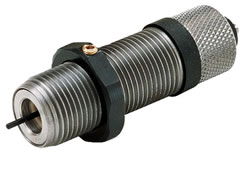So, after reloading around 30 - 40k rounds of .38, 9mm, .40 and .45acp I have decided to take the leap into rifle caliber reloading. I have picked up quite a bit of case prep tools and have watched a gabillion youtube videos. My idea of the process is as follows;
1. tumble brass
2. decap/resize (I use a Lee full length resizing die) and the Franford arsenal case lube.
3. Trim case to length (I use a possum hollow neck trimmer)
4. Primer pocket cleanout (Lee primer pocket tool)
5. Deburr and chamfer case (Lee deburring tool)
6. Tumble cases (to remove case lube and brass shavings)
7. Prime
8. reload
Anything I missed or am I overdoing it?
1. tumble brass
2. decap/resize (I use a Lee full length resizing die) and the Franford arsenal case lube.
3. Trim case to length (I use a possum hollow neck trimmer)
4. Primer pocket cleanout (Lee primer pocket tool)
5. Deburr and chamfer case (Lee deburring tool)
6. Tumble cases (to remove case lube and brass shavings)
7. Prime
8. reload
Anything I missed or am I overdoing it?


![Shocked [shocked] [shocked]](/xen/styles/default/xenforo/smilies.vb/007.gif) How many rounds are you reloading at a time?
How many rounds are you reloading at a time?